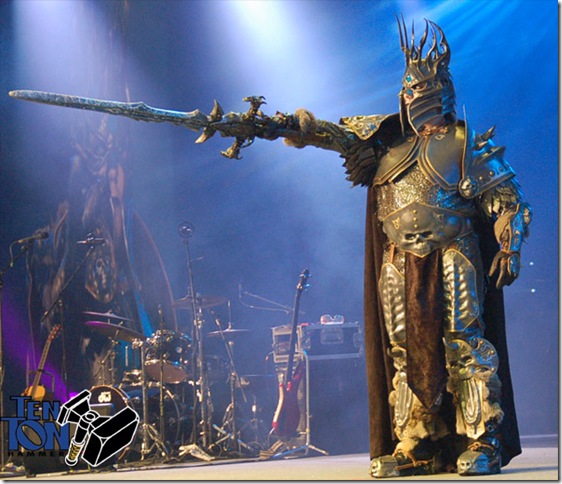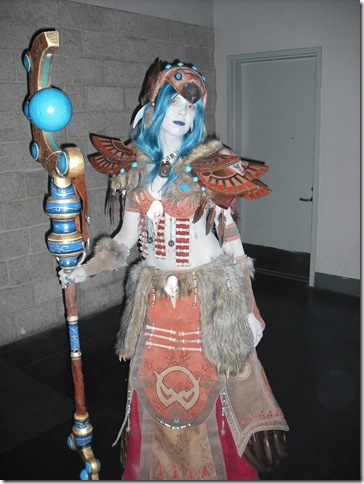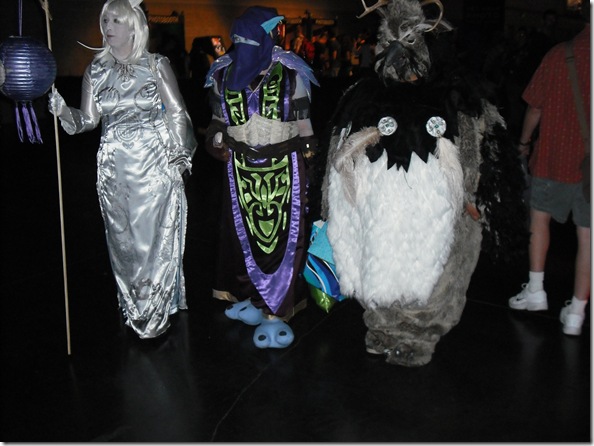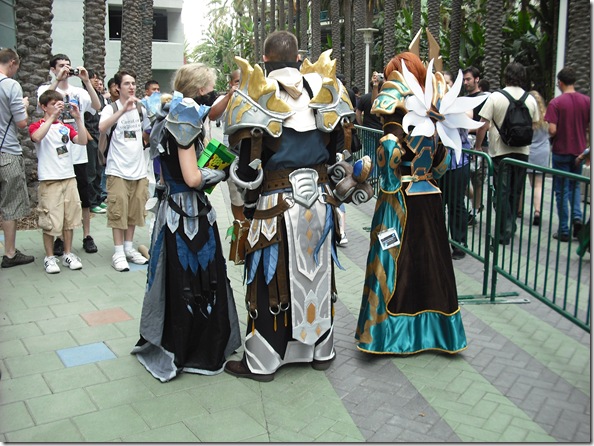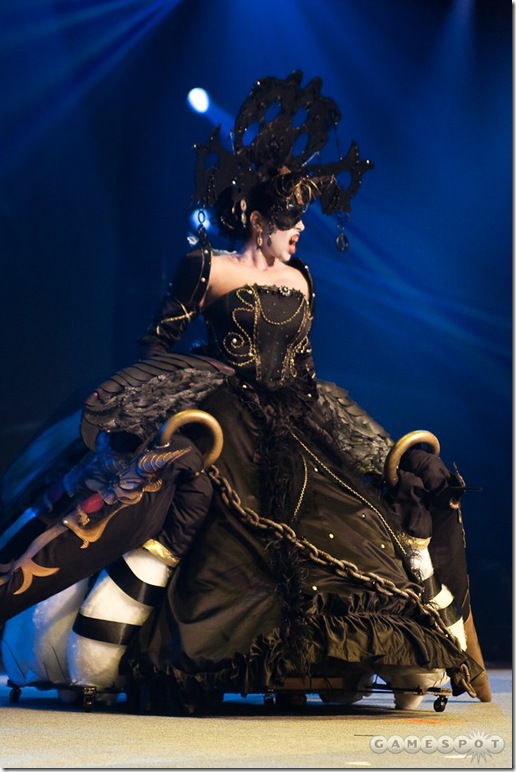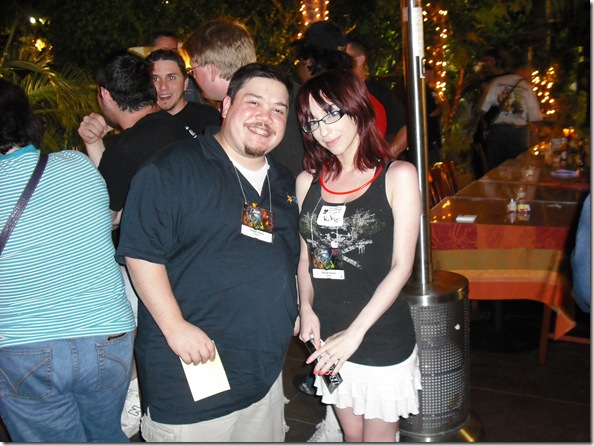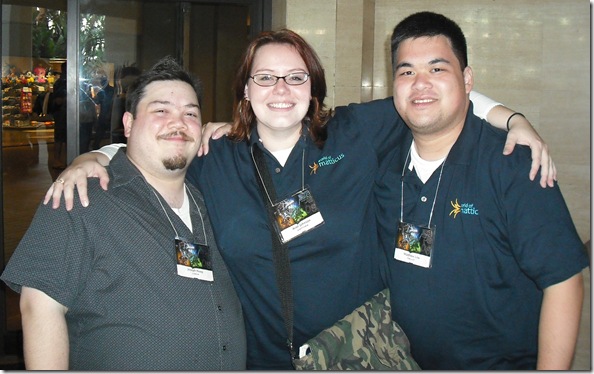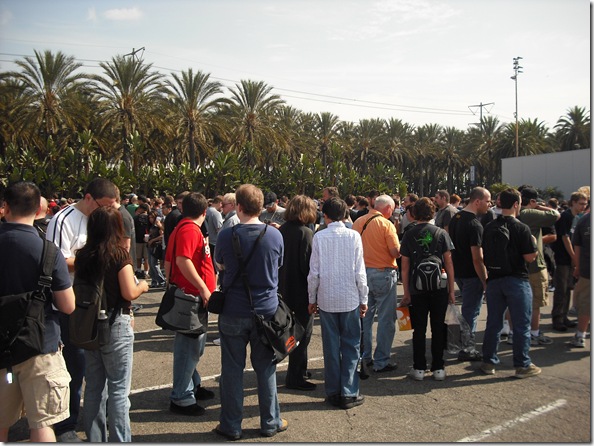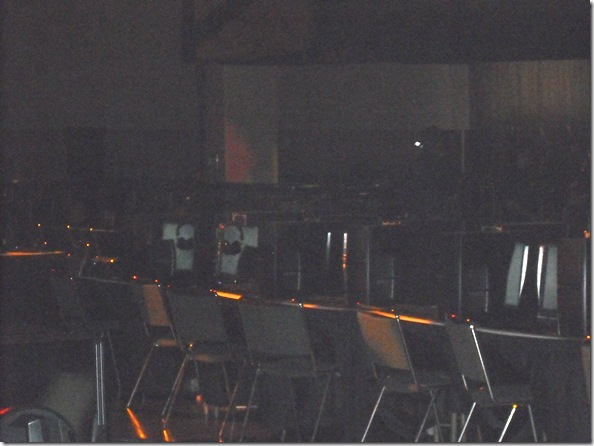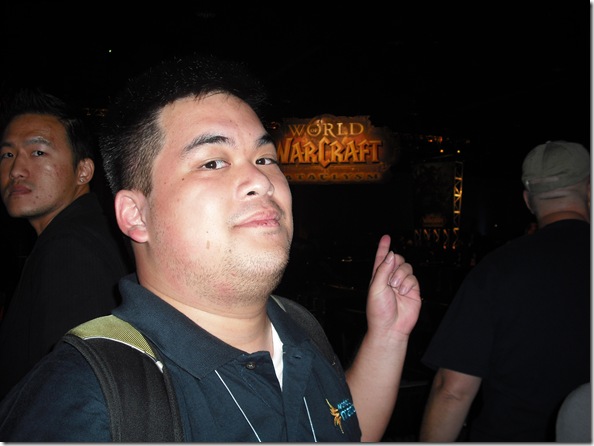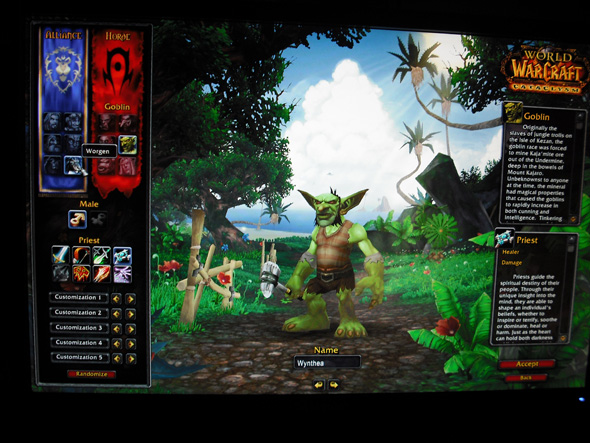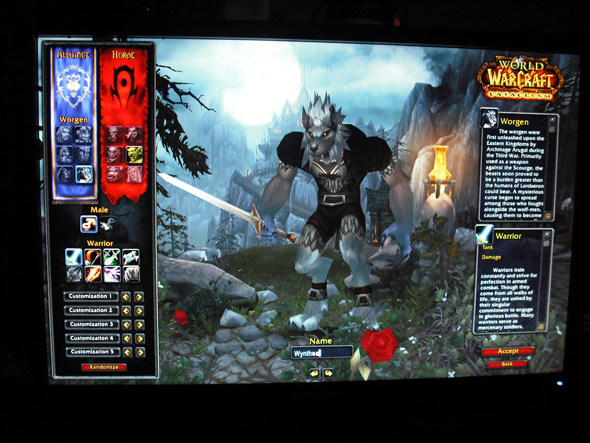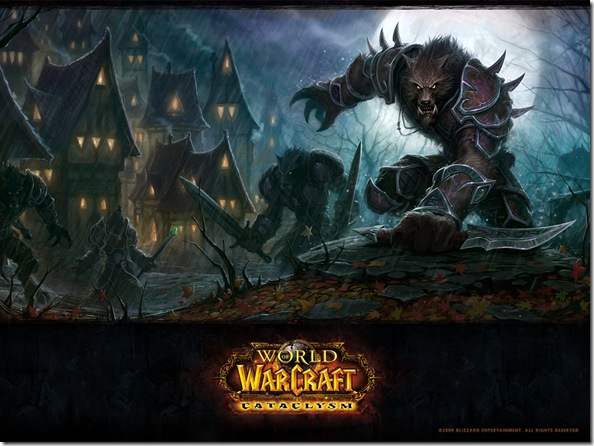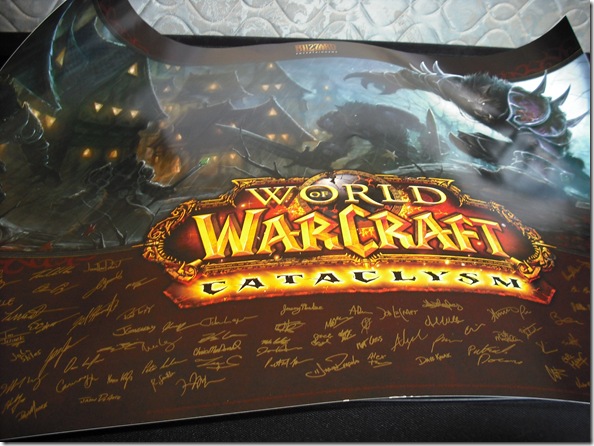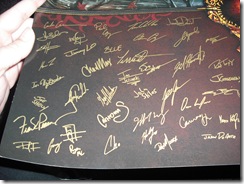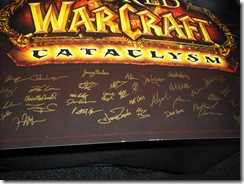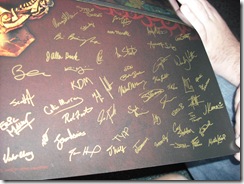Here’s the thing about an event like Blizzcon – there is SO MUCH going on that it overwhelms your senses and strips you of your faculties. You may have all the best intentions of blogging about every little detail, but what you end up coming away with is a jumble of emotions mixed with images…. and ringing in your ears if you stayed for Ozzy.
If you want coverage of Cataclysm, specific panels, or any other information, you can find the info on the official site, WoW.com, and even You Tube. If you want to hear about this Troll’s experience, keep reading!
Day 3 – a.m.
So getting up the next morning was tricky, but we still hauled our buns to the convention center by 10am. Why? I think I mentioned that my boyfriend is a huge Starcraft fan. We got there to see the final rounds of the RTS tournaments.
I have to say, I never really understood why these games were so popular, even 10 years after their release…. but now, I know. These matches were like chess, but with more pieces, better graphics, no taking turns, and now a room full of spectators. Every great play was greeted with cheers, and every killing blow with applause and whistles. The sheer speed of the players was like nothing I’d ever seen – spending less than a second on each view of the screen, just enough to click on their troops and direct them, then zoom back to another critical area of the map.
The video archive will be up soon on Blizzard’s site, and I highly recommend taking a look at it.
After yesterday’s issues getting back to the con from lunch, we decided to eat in the center that day – which wasn’t a bad idea at all. The food was quite good, and since prices already included the Anaheim area’s 9% tax, not much more expensive than what you’d find in the area. I don’t think I can say enough that the venue was perfect for Blizzcon. Most conventions sell nasty pizza and soggy french fries. I had a portabella mushroom wrap and a brownie. There was fresh fruit everywhere, and surprising things like frozen yogurt, candy apples, grilled-outside hamburgers, and chickpea salads. Seriously, next year, I don’t think I’ll bother to leave the center at all.
In between match-ups, the screens broadcast all the WoW panels I was interested in seeing – from better seats. The timing of the panels was well orchestrated, and used as entertainment for crowds that might be waiting in line for demos, or, like we were, for the tournaments to start. I’ll sum up my thoughts on all the news about Cataclsym later.
Day 3 – p.m.
After the tournaments, we meandered around the con, visiting vendor booths and exhibits we’d skipped the day before. My GM called to let me know that they’d saved seats for us in the main stage area, and we headed over for the closing ceremony.
The first band that played was Blizzard’s in-house metal band, Level 80 Elite Tauren Chieftan. Say what you want about them, the idea that a bunch of video game nerds get a chance to live out their rockstar fantasies is pretty awesome. I know I’d do it if I could. I’d heard mixed reviews beforehand, but was pleasantly surprised by their live performance – who knew Mike Morhaime, Blizzard CEO, could rock a bass like that? Lead vocals are provided by Samwise Didier – the same guy whose face appears when there’s no default icon for a spell in WoW. But all of this was just a prelude to the obvious headliner – Ozzy “The Prince of Darkness” Osbourne.
Confessional: I enjoy good music no matter the genre, so Black Sabbath and Ozzy have made their way into my iPod – although when I listen to metal it’s usually more along the lines of Theatre of Tragedy or Finntroll. That said, I was skeptical about Ozzy’s ability to perform. We’ve all watched him age, and witnessed the effects of a Rockstar lifestyle. I wondered would he be worth the hype live?
I shouldn’t have worried.
Ozzy gave, hands down, one of the best live performances I’ve ever seen.
That’s the footage I took of Ironman; there is SCADS more on YouTube. I especially recommend watching this:
The only thing is that to keep the audio levels appropriate so that those watching the DirectTV stream could hear the band, you can’t quite hear the crowd. Several of my guildies even asked me why the audience didn’t seem too enthusiastic….. on the contrary, it’s Tuesday, and my voice still isn’t back from the Saturday night concert. Apparently, it was also the first instance of crowd surfing at a Blizzcon.
We followed up the concert with a last dinner with the whole guild together, and that was it. Blizzcon was over. Only spanning two days, we felt like we’d been there for at least four – the days so long and packed with a million unique experiences.
The thing I’m most certain of is that I cannot WAIT to go again next year!
I’ll wrap this up soon with my thoughts on Cataclysm and the future of WoW.
Luv,
Wyn

